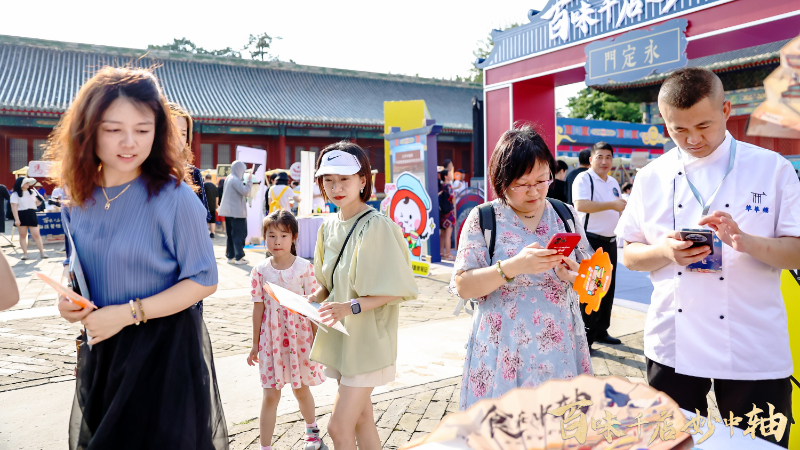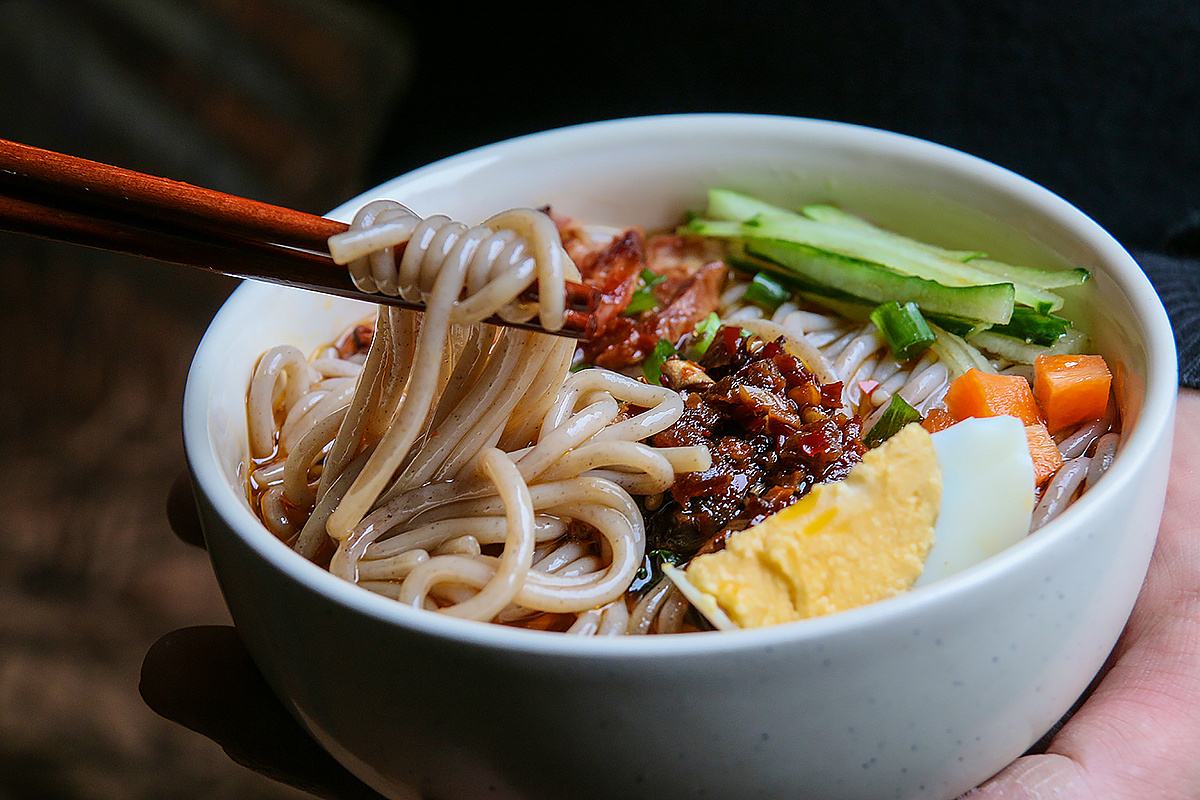Beijing Cuisine
Touring around Beijing, do not forget to taste authentic Beijing cuisine.
Peking Duck

Peking Duck [Photo via tuchong.com]
Just south of Tiananmen Square and the Qianmen Archery Tower lies Qianmen Street — a bustling hub of food, shops and entertainment in central Beijing.
Among the myriad food options, Peking Duck is a must-try.
As early as in Yuan Dynasty (1271-1368), the dish has graced the banquet tables of emperors. But you don't need to be royalty to enjoy it today.
In the network of streets sit two storied restaurants known for their Peking Duck — the 600-year-old Bianyifang and Quanjude, which was founded in 1864. The pair have both earned a place on China's national intangible cultural heritage list for their roasting techniques.
Bai Yongming, the inheritor of Bianyifang's roasting style with 40 years of experience, showed me the ropes. Soup is poured into each duck before hanging inside preheated ovens, which are more than 200 degrees Celsius. Without using an open flame, the ducks are cooked from heat that radiates from the inner walls as the door is shut.
This closed-oven technique is what earned the restaurant a place on the coveted heritage list. Within an hour, they emerge a tantalizing shade of golden-brown.
Just down the street, Quanjude's open-oven technique is equally impressive.
With an open flame fueled by wood from fruit trees, the inheritors skillfully swing ducks into place. They keep a watchful eye on the roasting birds through the smokey brick opening, and occasionally maneuver them over the flame to even out the color. The eye-catching flames and sound of crackling wood and sizzling juices will attract your attention.
The two restaurants take different routes but arrive at the same destination — tasty Peking Duck. And although the end result is what keeps the seats filled, the centuries-old traditions are what make them cultural treasures.
Tanghulu
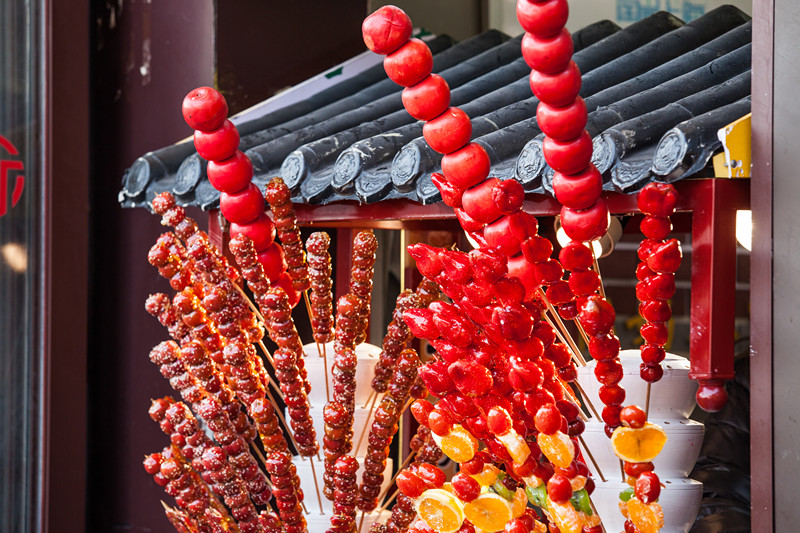
Tanghulu [Photo via tuchong.com]
Tanghulu is a popular traditional winter snack in northern China, especially in Beijing, and particularly for children. It consists of candied fruits on bamboo skewers that are approximately 20cm long. This snack can be found widely along the snack street of Wangfujing but there are street vendors who travel from place to place selling it.
Tanghulu typically has a hardened sugar coating that comes from dipping the skewer in sugar syrup, but versions can also be found with a second chocolate coating, or sprinkles. The fruits used are traditionally Chinese hawthorn but in recent times vendors have also used strawberries, blueberries, pineapples, kiwifruit, or grapes, resembling a fruit kebab.
Chaogan (Stewed Pork Liver)
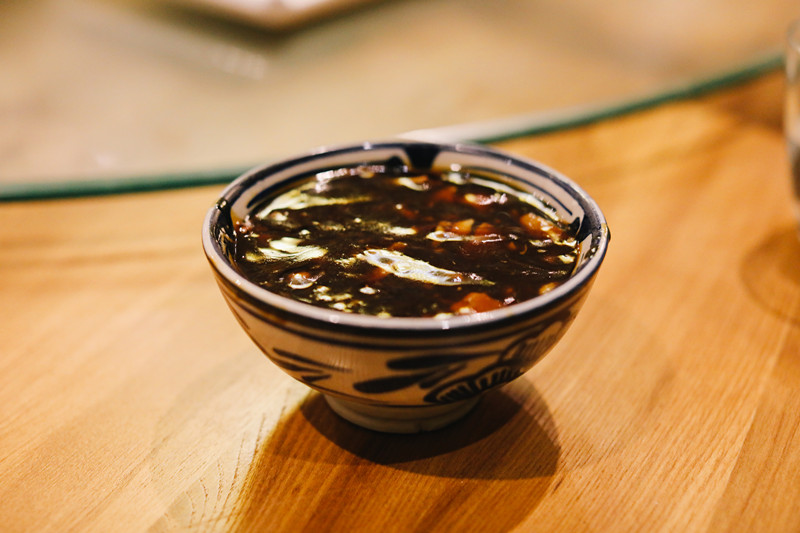
Chao Gan [Photo via tuchong.com]
Chaogan (Stewed Pork Liver) is a featured local snack in Beijing. Historically, Chaogan evolved from Aogan (stewed pork liver) and Aofei (stir-fried pork lung), folk foods in the Song Dynasty. It is also believed that it was originally a gourmet invented by the owner of Huixian Restaurant in the reign of Tongzhi in Qing Dynasty, who innovatively prepared it by taking away pork heart and lung. The reason was that it was taboo to stew and serve animal heart and lung together, figuratively cursing its customers simple-minded. Also, the feature of Chaogan in Huixian Restaurant does not mix any kind of seasoning in wok while stir-frying to keep pure taste of pork liver.
It's better to have Chaogan without chopstick or sponge. Hold the bowl with thumbs and touch the edge with lips and teeth in a round track while fingers slightly turn around the bowl. Sip Chaogan and gum them. You may feel it hot in the mouth and make sound in sipping Chao Gan but it is traditionally the most appropriate way to enjoy this local snack.
Douzhi and Jiaoquan
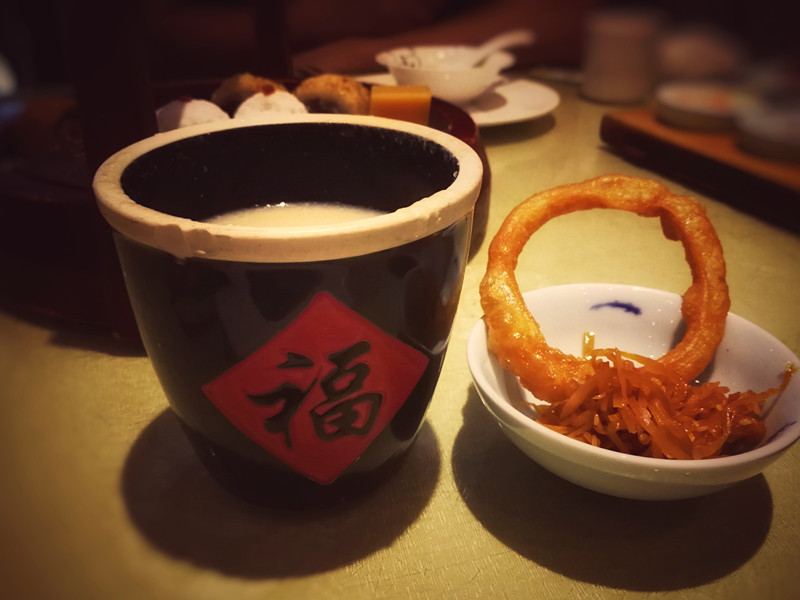
Douzhi and Jiaoquan [Photo via tuchong.com]
Beijing has a long history of making mung bean milk. As early as in the Liao (907-1125) and Song (960-1279) dynasties, mung bean milk was very popular. Local people of Beijing love to drink mung bean milk, because it is rich in protein, vitamin C and rough fiber and helps drive away summer heat, invigorate the function of the spleen and whet the appetite.
It is a dish from Beijing cuisine. It is similar to soy milk, but made from mung beans. It is a by-product of cellophane noodle production. It is generally slightly sour, with an egg-like smell.
Fermented green bean juice (douzhi) is the boiled juice left over after the process of making bean curd and then fermented. With a sour taste and fermented smell, it takes a few tries to get used to. The juice is normally drunk along with pickled turnip slices (xiancai), and a fried flour loop (jiaoquan).
Authentic Beijing Mutton Hot Pot
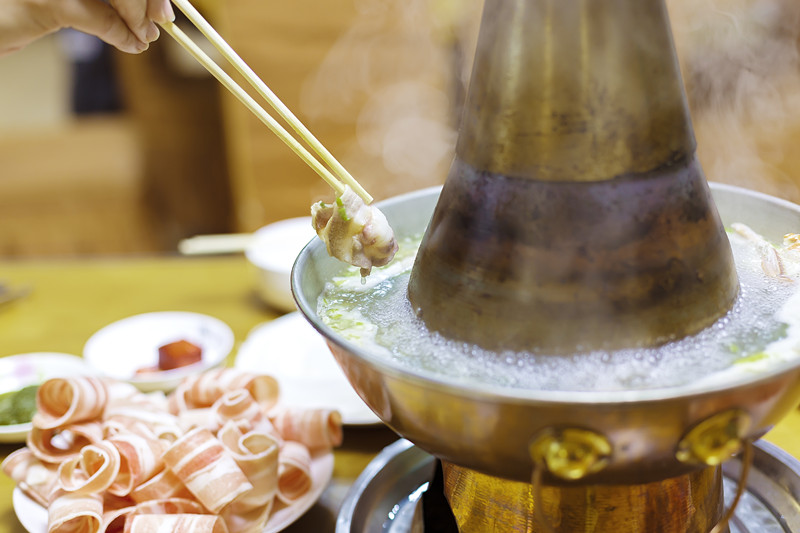
Authentic Beijing Mutton Hot Pot [Photo via tuchong.com]
Beijing Mutton Hotpot is a typical Beijing-style food. The soup is made from fresh water and mutton. The mutton rolls are all selected from high quality lambs, and various vegetables are available in the pot. The lamb rolls taste more delicious with sesame paste. Eating it has been a tradition for most Beijingers in winter, because it can keep you warm as well as strengthen bodies.
Zhajiangmian
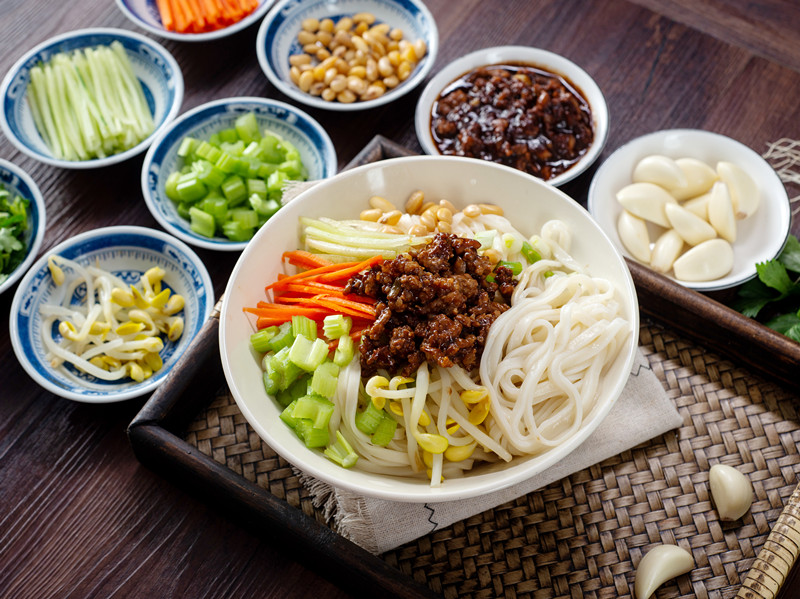
Zhajiangmian [Photo via tuchong.com]
Zhajiangmian, a traditional Chinese pasta. It consists of wheat noodles topped with fried bean sauce and vegetables. Zhajiangmian tastes fresh and delicious. It's popular in Beijing, Hebei, Tianjin and other places.
One bag of dried yellow sauce, half bag of sweet sauce (the remaining half bag can be used to make Chinese salad, dipped in radish, lettuce), two eggs, 100 grams of fat and lean diced meat (peeled). You can buy that kind of peeled diced pork in a supermarket, or make diced pork by yourself. Cut diced pork into half a centimeter square. Cucumber and bean sprouts, as well as turnips and soybeans, are indispensable. Cabbage hearts, green beans, dried tofu, shredded beans and raw garlic are also essential. In summer, it is also bactericidal, with scallion and ginger.
As for the preparation of the two sauces mix is such a yellow sauce dry fragrance, but if used in excess, it'll be too dry and too salty. The paste sauce tastes sweet, if prepared with the right proportion of the yellow and flour sauces 2:1.
The meat must not be too thin or contain too much fat. The pork must be easy to stir up the oil.



